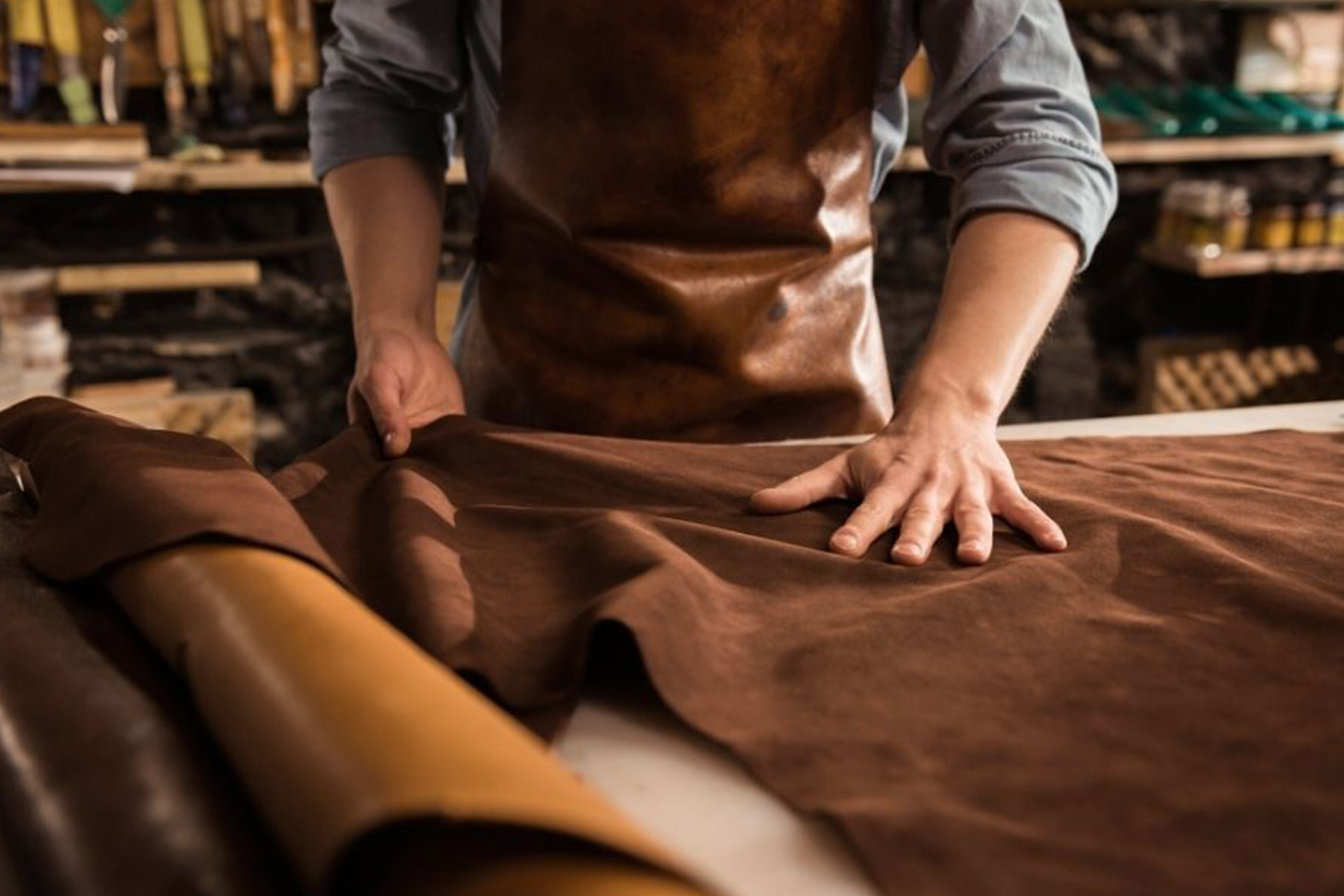How Is Leather Made?

Leather is made through a process called tanning, which involves treating animal hides or skins to transform them into a durable and pliable material. There are several steps involved in the leather-making process:
-
Preparation and Curing: After animals are slaughtered for meat, their hides are removed. The hides are then preserved through a curing process to prevent decomposition before they can be processed for leather.
-
Soaking: The cured hides are soaked in water to rehydrate them and remove any remaining blood, dirt, and salt. This also helps to make the hides more pliable for further processing.
-
Liming: The hides are treated with a chemical solution, usually containing lime, to remove hair and other unwanted proteins. This process also helps to loosen the epidermis (outer layer of skin) from the rest of the hide.
-
Fleshing: After liming, the hides are mechanically or manually stripped of any remaining flesh, fat, or connective tissue. This step helps to thin the hides and prepare them for the tanning process.
-
Splitting: In some cases, hides are split into two or more layers. The upper layer is the stronger and more valuable grain layer, while the lower layers are used for suede or other leather products.
-
Tanning: Tanning is the crucial step that converts raw hides into leather. There are two main types of tanning processes:
- Vegetable Tanning: This traditional method uses tannins from plant sources such as oak, chestnut, or hemlock. The hides are soaked in a tannin solution, which chemically reacts with the collagen fibers in the hide to make it more stable, flexible, and resistant to decay. Vegetable-tanned leather is often used for products like belts and saddles.
- Chrome Tanning: This modern and widely used method employs chromium salts to tan the hides. Chrome tanning is faster than vegetable tanning and produces softer and more supple leather. It's commonly used for products like shoes, bags, and garments.
-
Neutralization and Pickling: After tanning, the hides are treated to neutralize any remaining chemicals and adjust their pH. This step helps to stabilize the leather and prepare it for dyeing and finishing.
-
Dyeing and Fatliquoring: Leather can be dyed to achieve the desired color. After dyeing, a fatliquor mixture is applied to the leather to lubricate and soften it, making it more pliable and comfortable.
-
Drying: The wet leather is carefully dried to the desired moisture content. Excessive heat can damage the leather, so controlled drying methods are used to avoid over-drying or hardening.
-
Finishing: During this step, the leather's surface is treated to achieve the desired appearance, texture, and characteristics. Finishing processes may include buffing, embossing, polishing, and applying protective coatings.
-
Quality Control: The finished leather is inspected for quality, color consistency, and any defects. Only the leather that meets the desired standards is used for making products.
The leather-making process can vary depending on the type of leather being produced, the tanning method used, and the intended use of the leather. The end result is a versatile and durable material that is used in a wide range of products, from footwear and bags to upholstery and clothing.





